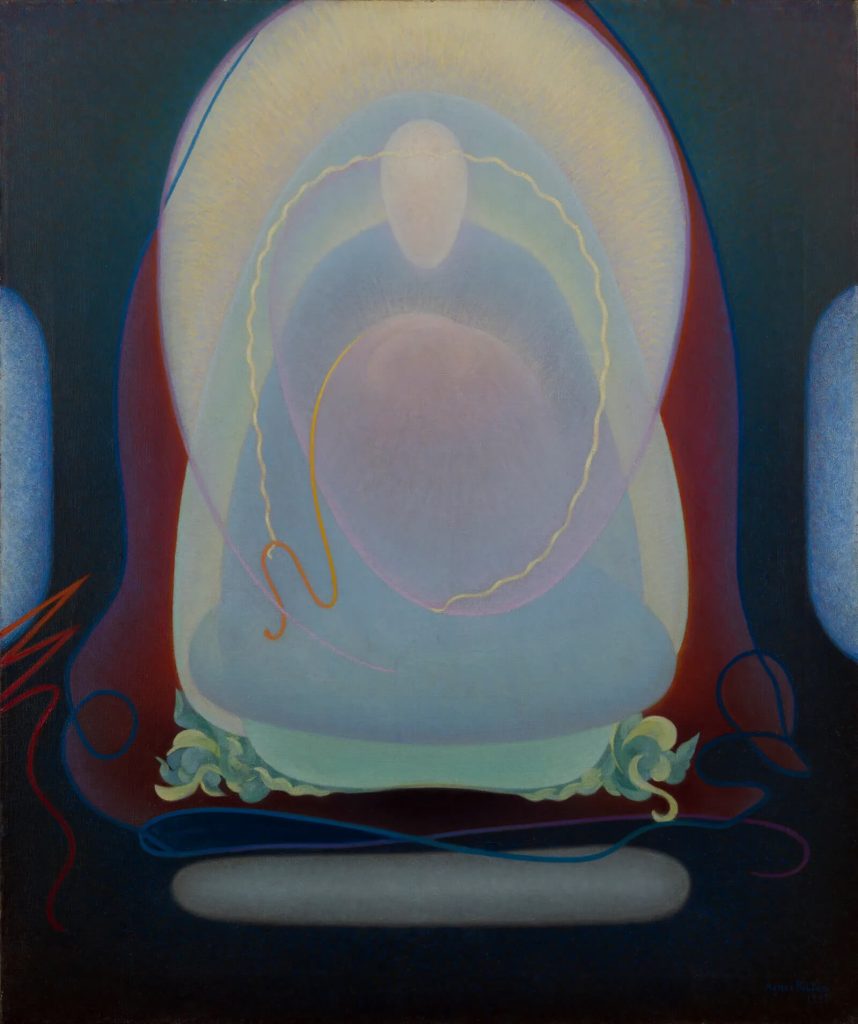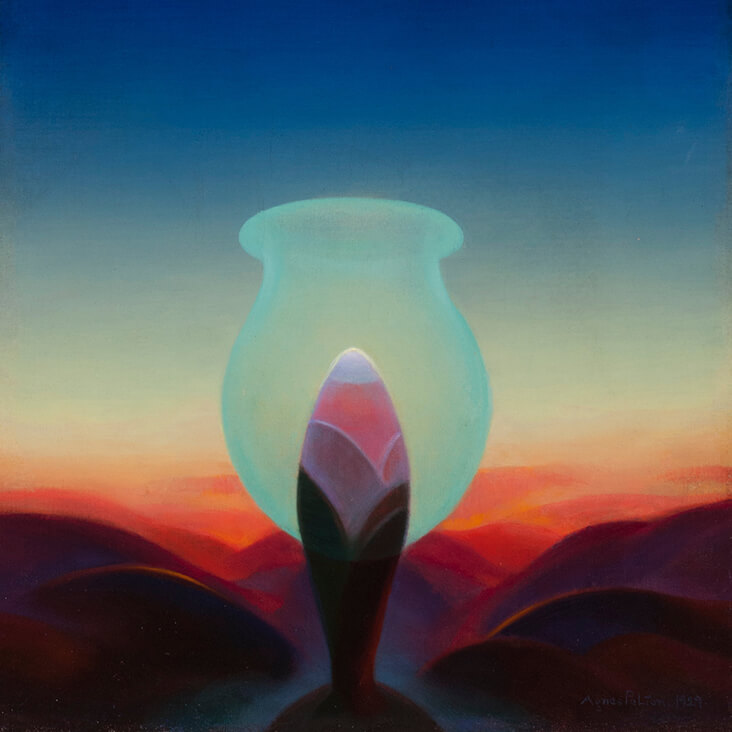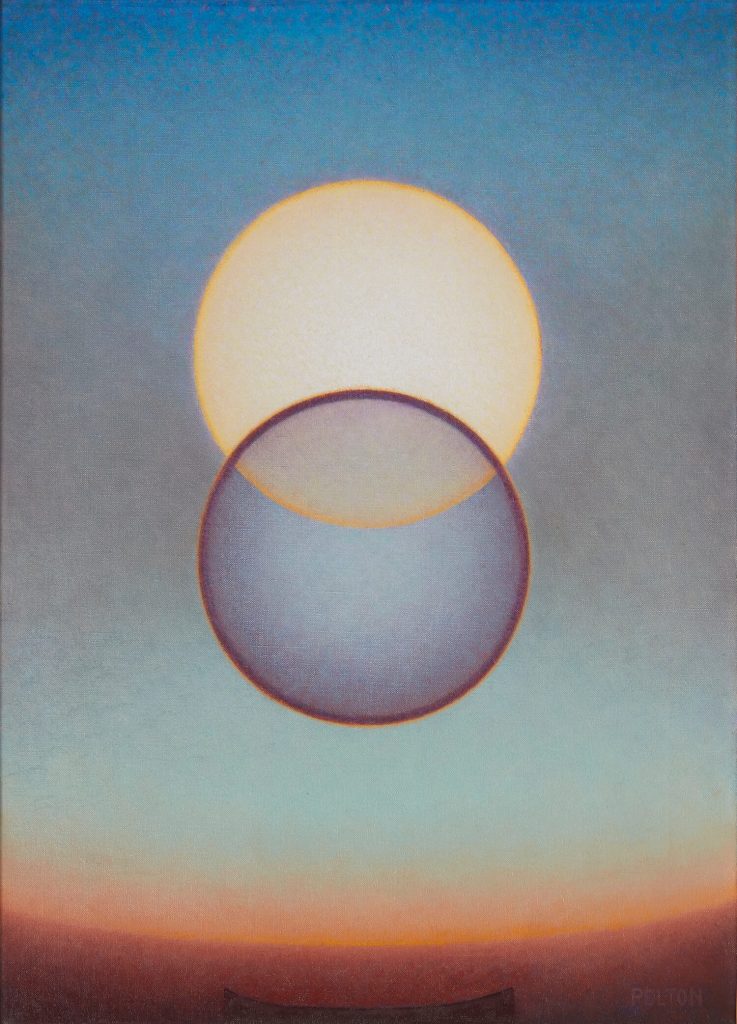FS Colour Series: Grape Wine Inspired by Agnes Pelton’s Rich Darkness
A pioneer in early 20th century abstraction, American symbolist painter Agnes Pelton was one of the first to explore art’s transcendental, otherworldly qualities. She found a route into the unseen spiritual world through the light and wonder of nature, painting sparking fireflies, glowing auras or haloes of sunlight that become gateways into another realm beyond our own. In much of her art Pelton embraced deep, dark shades of purple alike Grape Wine, which become shadowy recesses of night, a rich darkness filled with quietly evocative and intoxicating mystery.
Pelton was born in Stuttgart, Germany to American parents in 1881. The family travelled through Basel and Switzerland, and later relocated to Brooklyn in 1888. Pelton’s mother was a recluse, with a devout Christian faith, and this inward-looking aspect of her upbringing led Pelton to develop a deep interest in spirituality and the occult from a young age. As a young woman Pelton studied at the Pratt Institute in New York, where her tutor, Arthur Wesley Dow encouraged her burgeoning interest in the expression of an inner, abstract language instead of an imitation of reality. Following her graduation, Pelton studied in Rome for a year.
On her return to the United States Pelton became enmeshed with a group of likeminded artists in New York who painted dreamy, mystical landscapes featuring figures communing with nature. In 1922, Pelton settled in Long Island, away from the mainstream art world, and like her mother, she became increasingly reclusive and self-contained.
Over the next few years, Pelton developed interests in non-traditional notions of spirituality. She often wore ethereal Greek togas and studied theosophy and other alternative philosophies. Madame Blavatsky, a theosophical doyenne, had a profound impact on Pelton’s way of interpreting the world around her. Another strand of theosophy called Agni Yoga, shaped Pelton’s art. Founded by Nikolai Roerich and his wife Helena, Agni Yoga channelled Eastern wisdom, and fire as “the essence of the entire life, all-embracing, evading nought.” Pelton also drew inspiration from Wassily Kandinsky’s pioneering text Concerning the Spiritual in Art, 1910, cementing in her mind that the role of art was to present the spiritual through forms, shapes and colours.
In the stirring abstract painting Mother of Silence, 1933, Pelton depicts a seated, Buddha-like figure who seems to emanate a glowing aura of iridescent light, thus channelling the hazy, ethereal notions of theosophy that filled her mind’s eye. Surrounding her figure is a rich, deep shade of berry that seems to burn slowly like the glowing embers of a dwindling fire. Pelton often turned to meditation to find imagery for her art, and this artwork invokes the easy state of mind that she found through these moments of still silence.
In the later painting Fires in Space, 1938, Pelton paints a series of hot bright sparks against a rich, deep purple backdrop. These could be fireflies or fireworks against the night sky, or perhaps the elemental moments of spiritual awakening the artist found through her spiritual journeys into the unknown. In the last decades of her life, Pelton continued to explore the porous boundaries between the forces of nature and transcendental experiences. She painted the deeply introspective and quietly evocative small painting Departure, 1952 in the final stage of her life, and it demonstrates the artist’s harmonious state of mind as she entered her later years. Two mysterious, celestial orbs float together as if suspended in a state of partial eclipse, while the sky behind them silently fades into darkness. One orb seems to glow with blindingly white light, like the sun or the moon. The other, transparent form is an enveloping shade of berry purple, a deep, rich colour that is echoed across the still horizon, radiating embers of warmth, humanity and tranquillity.
























































Leave a comment